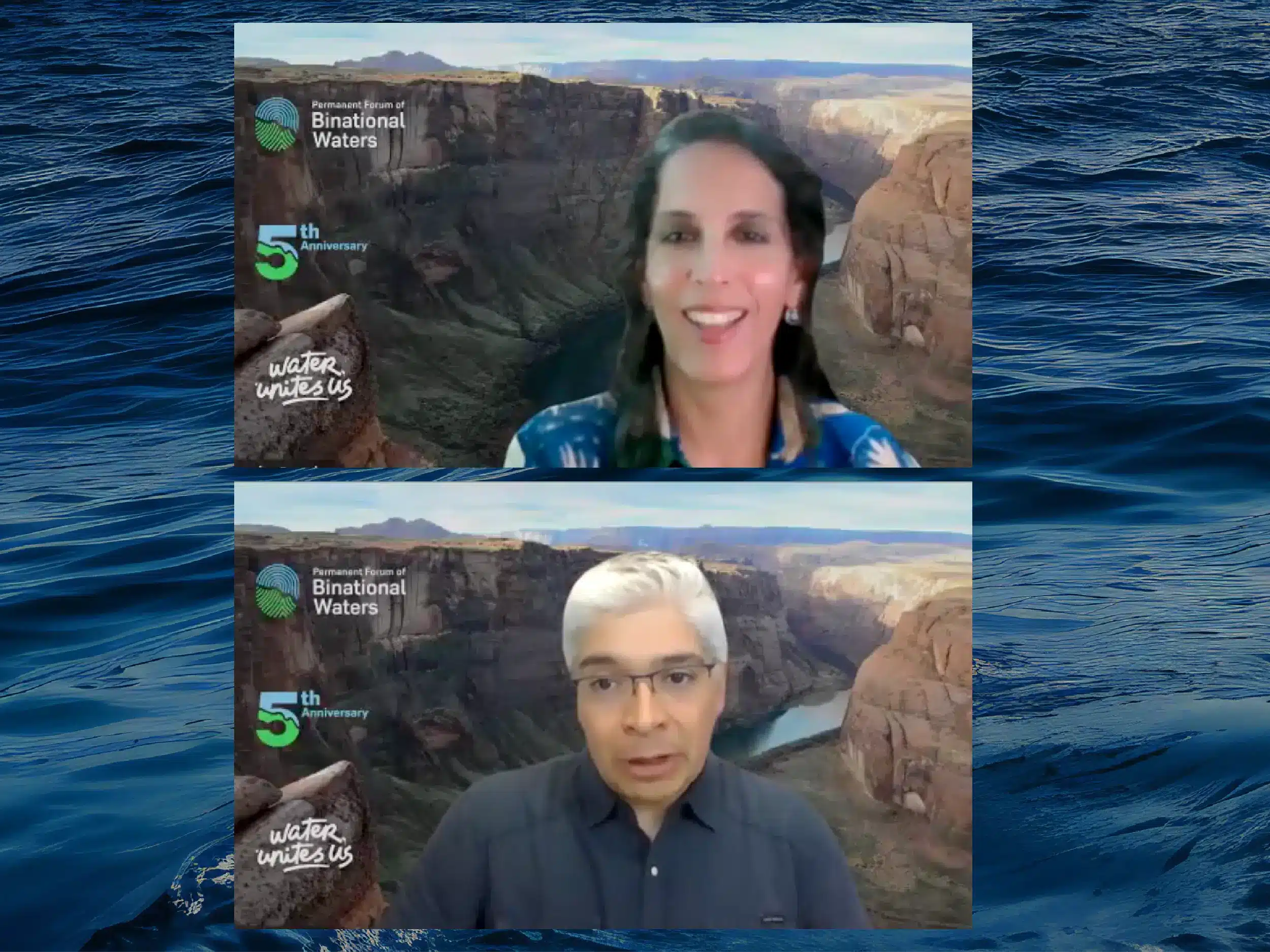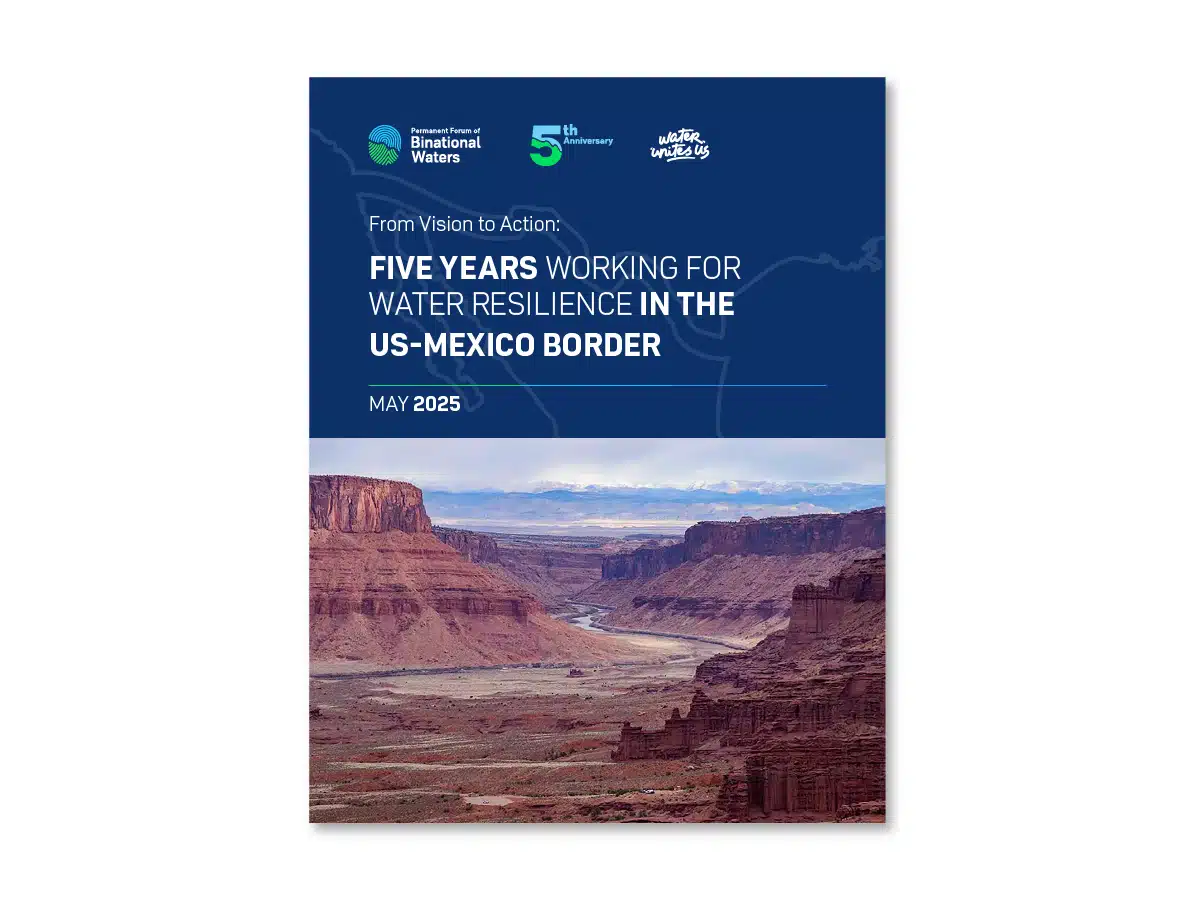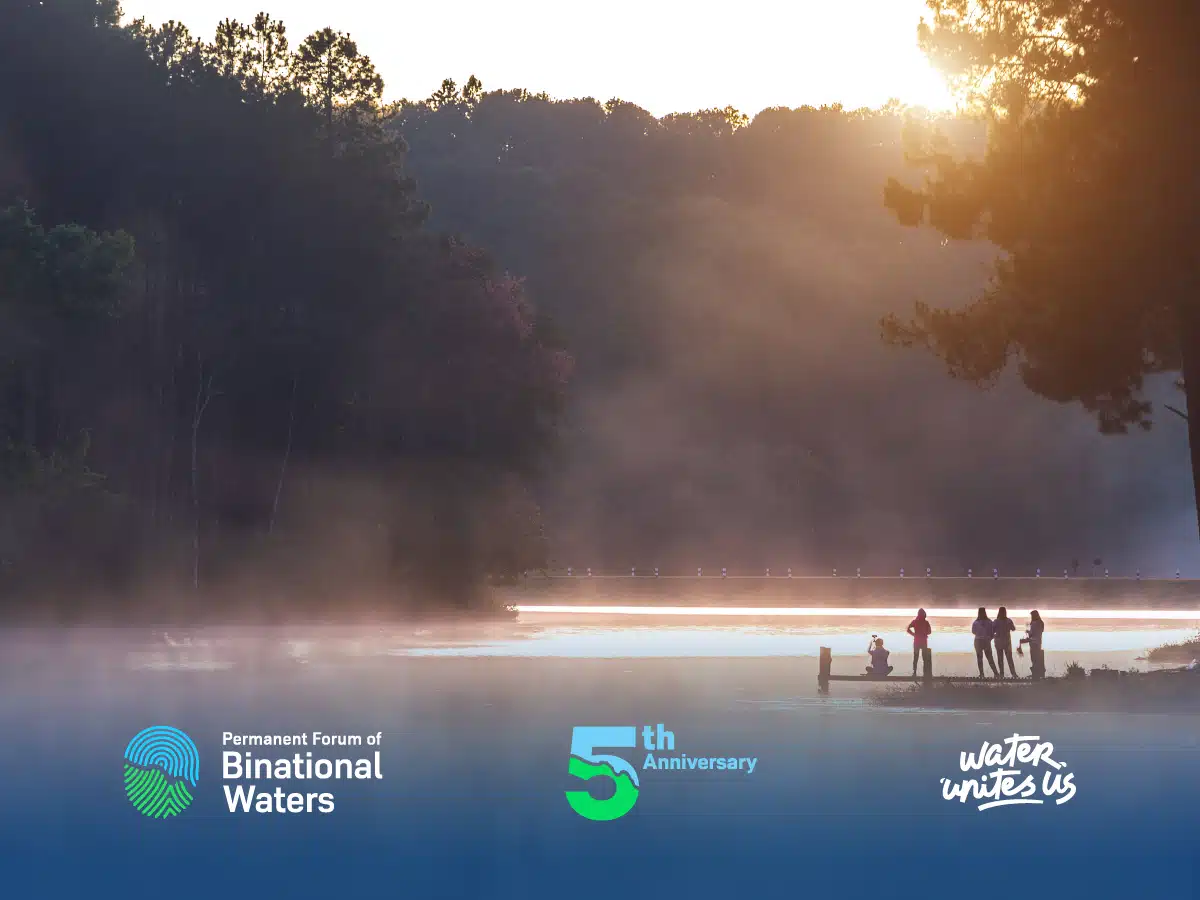In another episode of our program Science Talks, experts warned about the ‘new normal’ and called for “smart” agricultural practices, improvements in hurricane prediction, and an integrated approach to water management.
Experts gathered on September 28, 2023, to discuss the impact of hurricanes and tropical storms in the border regions between the United States and Mexico at a forum called “Pray for Rain and the New Hurricane Season: Impacts on the Border Region,” organized by the Permanent Forum of Binational Waters.
The panel, moderated by Gabriela Rendón Herrera, a master’s candidate at UC Davis, and Rosario Sánchez, a senior researcher at TWRI, brought together three young experts in climate science and hydrology.
If you want to see the full Let’s Talk Science event “Pray for Rain and the New Hurricane Season: Impacts on the Border Region,”
Dr. Amalia Ruiz de Alegría-Arzaburu, research scientist at the Institute for Oceanographic Research of UNAM, warned that although hurricanes in the Pacific are becoming more frequent and intense, specific data for the border region are still insufficient to draw significant conclusions.
Grace Gómez Quiroga, hydrologist and environmental specialist at UC Davis, presented her research on the Rio Grande-Rio Bravo basin. Her findings showed little change in the timing of maximum flood flows from 1900-2015, but she emphasized that human activities have significantly impacted the basin’s natural hydrology more than hurricanes or floods.
Dr. Santosh Subhash Palmate, Assistant Professor of Arid Hydrology and Water Systems at Texas A&M University, analyzed over a century of hurricane data affecting the Texas-Mexico border. He noted that although the magnitudes of the hurricanes have remained stable, wind directions have been changing.
Addressing the implications of these findings, Dr. Amalia Ruiz highlighted risks such as beach erosion and changes in ecosystems, particularly in the California, United States and Baja California, Mexico region.
Grace Gómez indicated that in a healthy river system, floods play a natural role, but human changes have largely negated this function, especially since the 1950s.
Dr. Santosh Palmate discussed broader ramifications in land and water management, agroecosystems, and infrastructure, and also addressed how climate changes in Central America are partially responsible for human migration patterns.
The “New Normal” in Climate Patterns
Dr. Amalia Ruiz recommended long-term monitoring programs to build reliable information and data for sensitive environments in the border region. Grace Gómez warned about possible extremes in both dry periods and intense rainfall events. Dr. Santosh Palmate talked about the repercussions on water allocation and agricultural practices on both sides of the border.
In their recommendations, Grace Gómez advised adhering to existing scientific knowledge about environmental flows, especially in the face of increasing uncertainties. Dr. Amalia Ruiz emphasized the need for more robust data, particularly for the Pacific coast, while Dr. Santosh Palmate drew attention to the impact of these changes on the western and coastal areas of Texas.
The Q&A session that followed the panel discussion addressed concerns about rising sea levels, the frequency of extreme weather events, and ongoing extraordinary drought conditions.
Topics such as adaptations to the 1944 Treaty, which was drafted in a relatively wet period, were also discussed in light of the new climatic realities.
As border regions prepare for what could be a new climate normal, this forum highlighted the urgent need for data-driven collective strategies to mitigate the complex implications of these evolving climate patterns.
Jerry Kurtyka, a member of the Permanent Forum of Binational Waters, collaborated in the preparation of this article.









Responses